Digitip 024 – Adobe Acrobat 6 / Adobe InDesign CS
Revision 1.0
This tip has been added by popular request. On installation of Adobe Acrobat, the Adobe PDF printer is added to the list of printers in your printer utility (Applications/Utilities folder). This printer can be used to output files to PDF directly as if printing to a normal PostScript printer. The following example is using Adobe InDesign as the source application for the document printed.
Printer setting from within InDesign
Start by selecting the Print command from the application from which you are printing, and select the Adobe PDF as your printer.
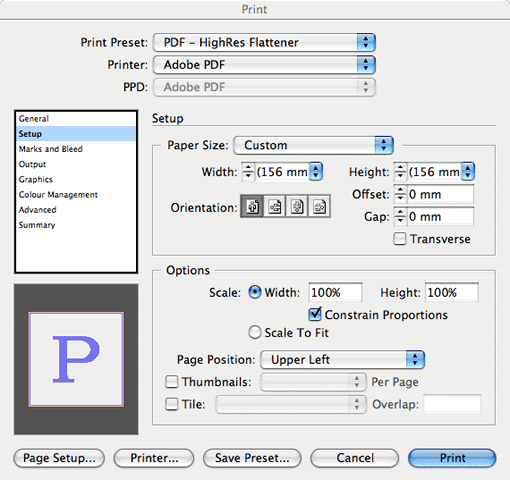
When printing to Adobe PDF from InDesign CS, you select paper size “custom”, as InDesign’s print feature will automatically extend the media size of the PDF that is to be created with space allocated for things like bleed, slug and registration marks. The document in the example contains a bleed.
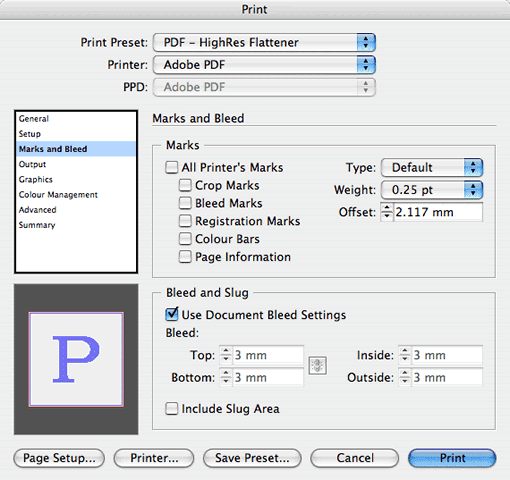
In the Marks and Bleed section of the InDesign print dialog box I enable the “Use Document Bleed Settings” feature. This will extend the PDF media size by 3 mm all around. In some applications you will be required to manually add the bleed requirements to the media size (paper size you are printing to), check the documentation for your application for more information on this.
Continue to set the required settings for Output, Graphics and Colour Management, Advanced. The example below is used to create a process colour PDF file.
Saving print preset from InDesign CS
It’s not required to run through the various InDesign print options for each individual job. Once you’ve set-up the print options, select the Save as Preset… button at the bottom of the Print dialog box.
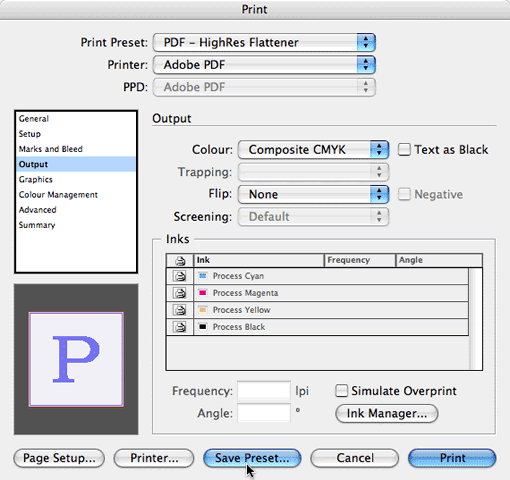
In my example I’ve named my print preset PDF – HighRes Flattener, indicating which transparency flattener settings I’m using in the Advanced section of the Print Dialog box.

The thing to remember about these presets is that they only control the settings for InDesign. This means that Adobe PDF Settings (formally referred to as joboptions) to be used for creation of the PDF must be found elsewhere.

You access these settings by clicking on the Printer… button at the bottom of the print dialog box.
OSX – Printer settings for Adobe PDF
The dialog box that follows next seems to cause confusion.
The biggest confusion in OSX, is the appearance of a “Save as PDF” button in the OSX print dialog box, and it’s all too easy to click this button to generate your PDF. However when doing so the PDF you are generated will not be an Adobe PDF, but have another ‘flavour’ (I call it the OSX-flavour PDF).
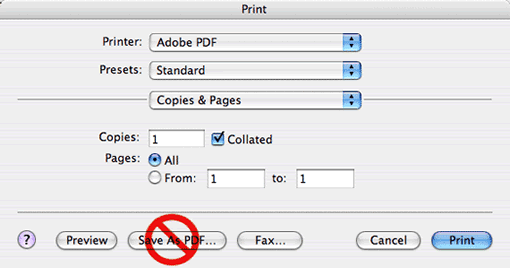
I can not stress this enough: When you get to this dialog box do NOT click the Save As PDF… button…
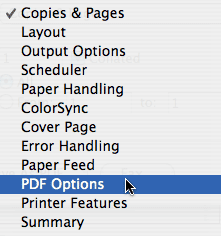
Instead select PDF Options from the Copies & Pages pop-up menu. All printer specific options are found in this pop-up menu. For instance: nder the Printer Features option you can change the target output resolution of your file.
With the PDF Options selected, you can now select the required Adobe PDF Settings from the settings menu. The settings available to you are those Acrobat Distiller defaults plus any additional settings you might have installed.
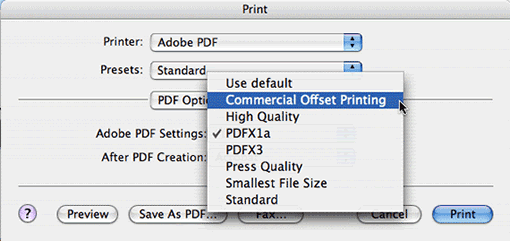
Having to change these settings over and over is a painful exercise. You could make it a bit easier by creating Presets for linked to the various PDF Settings you might use.
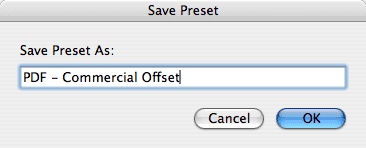
From the Presets “standard” pop-up menu select save preset, and name your preset (I’ve named mine PDF – Commercial Offset, as it is linked to my Commercial Offset Printing Adobe PDF settings. The next time I return to the OSX Print dialog box, I merely need to select the appropriate preset from the preset dialog box in order to change my Adobe PDF Settings (and additional Printer Features such as output resolution if needed).
Having saved your preset you are now ready to Print. Click Print in the OSX print dialog box. You will be prompted to name and save the PDF file. Click on Save to return to the InDesign print dialog box.
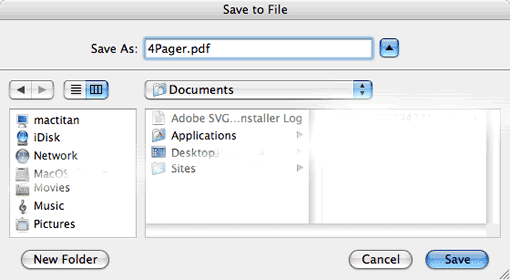
Then click Print again, to start generating your PDF file.
Use Acrobat’s Preflight command to check the accuracy of your PDF prior to sending it to your commercial printer.
Leave a Reply